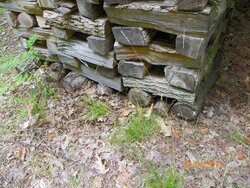I would take that as a compliment. Most people my age or younger don't know how to re-use things effectively.
Ever recycled used oil using the wick method? I've tried this and it does work. Slow and wouldn't recommend using it in a no need situation but if you had to...
CLEANING USED ENGINE OIL
In hard times in the past, many people have cleaned their own engine oil so their internal combustion engines would not wear out from the use of old, dirty oil. Because it is a simple process to do, and may be necessary in the future, I will give you that information now. Once implanted in your mind you will never forget this process. If you ever need to do this, remember me.
Engine oil does not wear out. It becomes contaminated with grit and combustion residue, and the additives for detergent action and anti-foaming dissipate. Cleaned oil will also lack those additives, but if used at a ratio of 3 quarts of cleaned oil and one quart of new oil, sufficient additives will be present to work while also stretching your supply of new engine oil.
The concept of cleaning used engine oil is based on the capillary action of natural fibers and siphoning which is gravity assisted. A clean natural fiber rope (cotton, hemp, sisal, etc) contains hollow fibers. When oil passes through the cell walls of the fibers the contaminants are trapped in the cells, while the oil passes through readily. A half-inch thick cotton rope about 3 1/2 feet long is best: anything else will work, but slows the process considerably. The trick is to get the oil to go through the rope all by itself, and that is where we use both the capillary action of the fibers and gravity to our advantage.
The typical system is to use two 1-gallon glass containers, like used wine jugs (A visit to your local "waste disposal" or recycling site, a little pilfering, and a trip to confession usually does the trick.) One of the bottles holds the used oil -- the other one will receive the cleaned oil.
Now that you have the bottles you will know how tall they are, so a rack must be built. One side of the rack will have a shelf high enough so that the bottom of one bottle is at the same height as the top of the other one. Just about anything strong enough to hold the bottles securely will work, so this is not a complicated procedure.
Then the bottle full of used oil is put on the top shelf, the empty one on the lower shelf, side by side, and the ends of the rope placed down to the bottom of each bottle. The rope must form a nice hoop from one bottle to the other, not touching the top of either bottle. If necessary, straight pins may be used to hold the rope in the middle of the bottle openings, but the rope must not be pinched. (It is less messy to get the length of rope and the exact placement of the bottles set before filling one with oil.)
The oil will climb up the rope by capillary action, through the loop, then start down toward the empty bottle. As the oil level passes the bottom of the upper bottle, gravity will begin to take effect and the oil will start flowing faster -- still slow, but faster. After a couple of weeks almost all of the oil will be in the lower bottle -- and clean!


